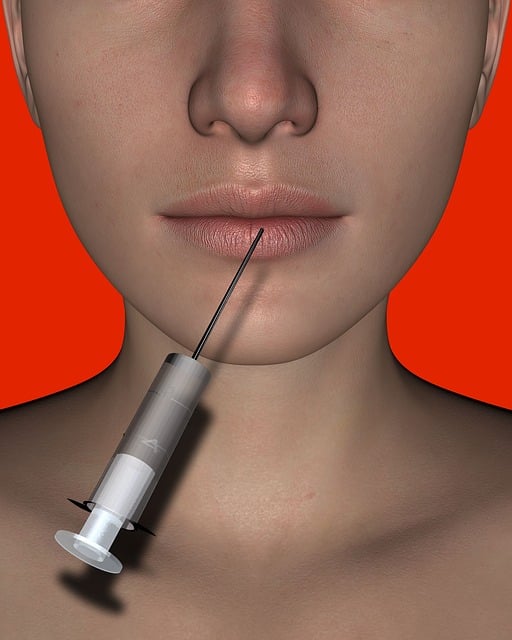Botox for neck muscle spasms (cervical dystonia) blocks nerve signals causing painful contractions and involuntary head positioning, offering significant relief through temporary muscle paralysis. Non-invasive and safe when administered by qualified professionals, it's a preferred method for chronic tension, providing quick recovery and improved mobility.
Botox for neck muscle spasms has emerged as a non-invasive treatment option, offering relief to those suffering from chronic tension. This article delves into the science behind Botox, exploring its role in relaxing overactive muscles and alleviating symptoms like spasms and pain. We’ll break down the causes and symptoms of neck muscle spasms, examine how Botox works, and discuss its effectiveness, benefits, and safety considerations as a treatment for these uncomfortable conditions.
Understanding Neck Muscle Spasms: Causes and Symptoms
Neck muscle spasms, also known as cervical dystonia, are involuntary contractions that can lead to abnormal head positioning and significant discomfort. These spasms result from dysfunctional signals between the brain, spinal cord, and muscles, affecting the neck and sometimes extending to the shoulders and upper back.
Common causes include neurological conditions, injury, or certain medications. Symptoms typically manifest as painful, stiff, or tight muscle contractions, causing the head to twist or turn uncomfortably. Individuals may experience difficulty turning their head, and in severe cases, the spasms can lead to a persistent awkward posture. Botox for neck muscle spasms has emerged as a treatment option, offering relief by blocking nerve signals that trigger muscle contractions.
How Botox Works to Relax Muscles
Botox, or botulinum toxin, works by temporarily paralyzing muscles, which can significantly alleviate symptoms related to neck muscle spasms. This substance is naturally produced by a bacterium and, when injected into specific muscles, blocks nerve signals that cause contraction. By inhibiting these signals, Botox prevents the overactive muscles from tightening, leading to relaxation and reduced spasms. The result is a smoother, less tense appearance in areas like the neck and face.
The relaxing effects of Botox are particularly beneficial for managing chronic neck muscle spasms, which can be caused by various conditions such as stress, poor posture, or underlying medical issues. Through targeted injections, it offers a non-invasive approach to treat these spasms, providing patients with relief from discomfort and improving overall mobility.
The Science Behind Botox's Effectiveness in Treating Spasms
Botox has emerged as a highly effective treatment for neck muscle spasms, offering relief to many individuals suffering from this painful condition. The science behind its success lies in its ability to temporarily paralyze or relax specific muscles, thereby reducing the frequency and intensity of spasms. When administered by a qualified medical professional, Botox injections target overactive nerve endings, disrupting the communication between nerves and muscles. This disruption results in muscle relaxation, providing an immediate sense of calm and alleviating tension.
The mechanism of action is quite intricate. Botox molecules bind to receptors on the nerve terminals, inhibiting the release of acetylcholine, a neurotransmitter responsible for muscle contraction. By blocking this transmission, Botox effectively stops or significantly reduces voluntary muscle contractions, which are often the root cause of spasms. This non-invasive procedure offers a safe and minimally painful way to manage chronic neck muscle spasms, making it a popular choice in physical therapy and pain management.
Non-Invasive Treatment: Benefits and Safety Considerations for Botox Injection
Botox injections have established themselves as a non-invasive treatment option for various conditions, including neck muscle spasms. This procedure involves injecting a small amount of botulinum toxin into targeted muscles, leading to relaxation and relief from painful spasms. One of the key benefits is its minimal invasiveness; unlike surgical interventions, Botox offers a quick, relatively painless process with little to no recovery time. This makes it an attractive choice for individuals seeking an effective yet gentle approach to managing chronic neck tension and associated discomfort.
Safety is a paramount concern when considering any medical treatment, and Botox injections are no exception. When administered by qualified healthcare professionals, Botox for neck muscle spasms has been found to be safe and well-tolerated by most patients. However, as with any procedure, there are potential side effects, such as temporary bruising or swelling at the injection site. It’s crucial for individuals to consult specialists who can provide expert guidance, ensuring the best possible outcomes while minimising risks associated with Botox treatment.
Botox has emerged as a highly effective, non-invasive treatment option for managing neck muscle spasms. By relaxing targeted muscles, it provides significant relief from pain and discomfort associated with spasms. Supported by robust scientific evidence, Botox injections offer a safe and efficient solution for those seeking long-lasting results without surgery. For individuals suffering from chronic neck spasms, exploring Botox for neck muscle spasms could be a transformative step towards achieving comfort and improved quality of life.
